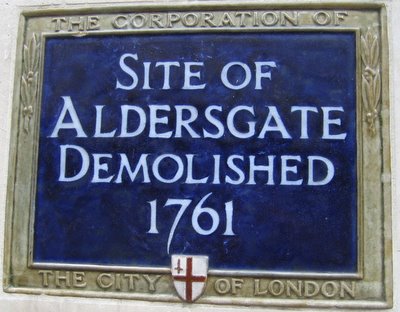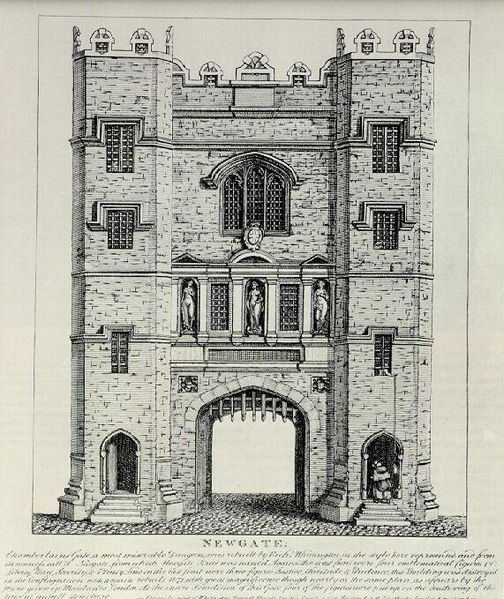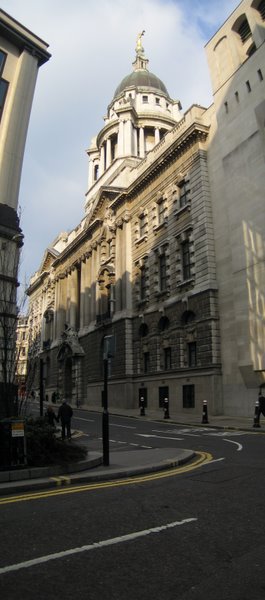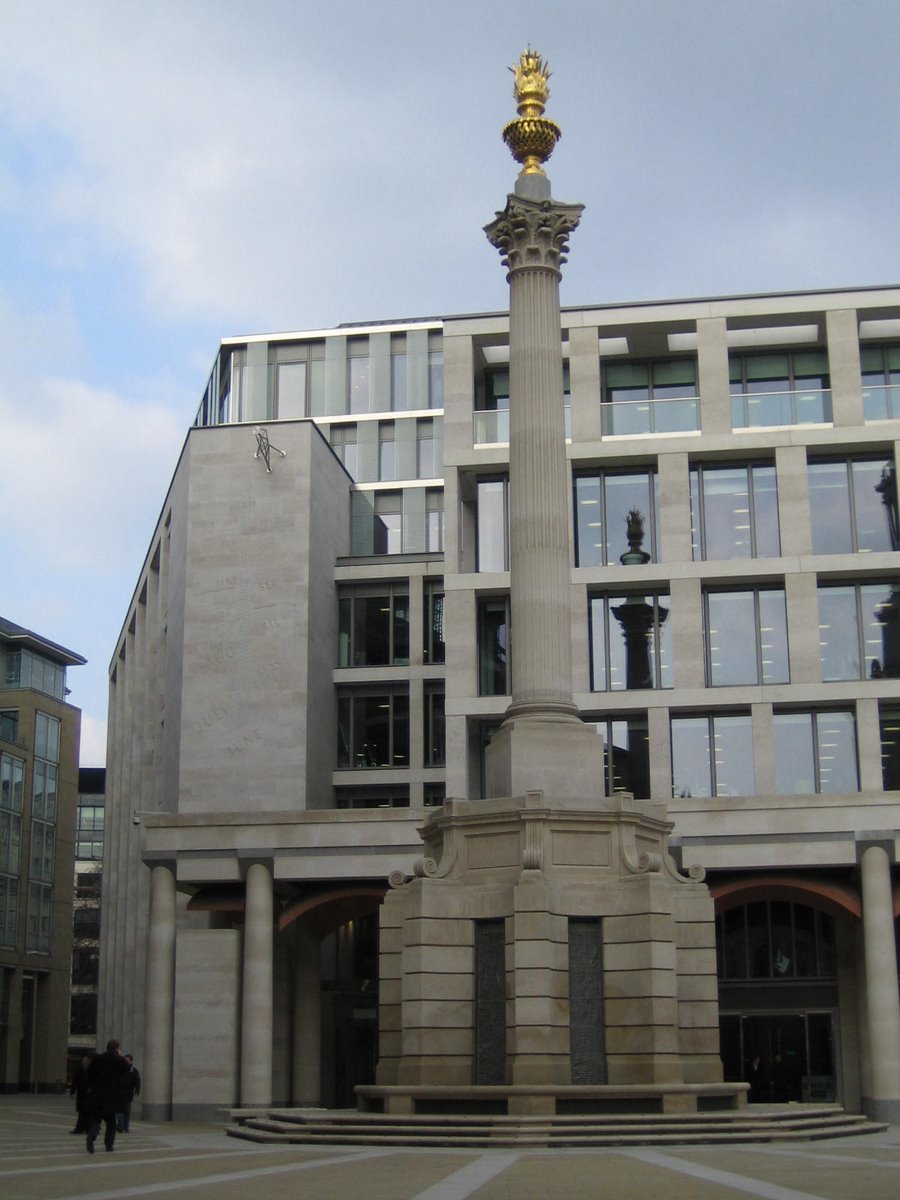The Western Gates of the London Wall
Visited 17 March 2006
|
Seven
gates opened London's walls to the barbarians outside (and
controlled commerce on the way in). Typically these were
substantial buildings with living quarters (sometimes used for prisons)
above the roadways. Although the Romans first made these
entrances double arched, usually one of these arches would be boarded
up after commerce declined as Roman rule deteriorated.
Gunpowder made city walls obsolete from a defensive standpoint around
the 15th century, but still London maintained its walls and gates,
rebuilding many of them in the 1700s, only to tear them all down except
for the non-Roman Temple Bar in 1761. To help walkers know
where these gates once were, the Museum of London has placed ceramic
plaques in the walls of buildings across from where the gates stood.
|
 |
We've already discussed the three eastern gates (in clockwise
order) Moorgate, Bishopsgate and Aldgate. Here's some
information on the five others moving from west to east
(clockwise):
The westernmost gate was Ludgate, near another Wren building, St.
Martin's church. Next came Newgate:

Newgate was used as a prison and was
eventually replaced by Old Bailey in 1907, London's current center of
Justice (right). Sections of the old wall are still found inside
Old Bailey.
|

Note the figure of Justice at the
very top.
|
Next (in clockwise order proceeding west to east) came
Aldersgate near where the Museum of London now stands at the edge of
the Barbican Estate (itself named for a wall fortification).
The Museum-provided plaque where the Aldersgate contains this depiction
of the Roman gateway as seen from outside the city:
This was a late Roman gate, probably 4th century when frequent
Saxon raids caused London to re-fortify
its walls. The large towers provided a high base for
catapults. The twin arches and the moat are typical of the
Roman wall fortifications. Rebuilt in the 9th century and
named after its Saxon builder, Alder, Aldersgate was also used
as a prison during the middle ages. This gate was
completely rebuilt in 1617
but damaged in the 1666 fire. Like its sister gates, it was
destroyed in 1761 to improve traffic flow.
Next came Cripplegate now in the Barbican Estate
area. Cripplegate has nothing to do with cripples even though
the nearby church of St. Giles-without-Cripplegate is dedicated to the
patron saint of cripples and beggars. Cripplegate is derived from the
Saxon word for a covered way (crepel). Such a covered way led from the
city walls to a defensive mini-fort (a barbican).
What's left: Temple Bar, the gateway from the Roman city to
the new area to the west (Westminster) where the king established the
political power. Strictly speaking, this wasn't really a
gate. London's territory extended beyond the walls and it
needed to collect
tolls sometimes far from its gates. Prime among
these was the road from the village Westminster into the City.
Temple Bar (named after a nearby Temple Church --bar
is the Viking word for gate) was first built of wood in the late 13th
century and all but destroyed in the 1666 Fire. In 1672
Christopher Wren created a masterpiece of Portland Stone at the
intersection of Fleet Street and the Strand which was reassembled in
2004:
Above: Temple Bar as seen from St. Paul's.
Londoner's were reluctant to remove it from Fleet Street even though it
impeded traffic. It was disassembled stone-by-stone and
reassembled at a brewer's estate where it was frequently assailed by vandals.
Reassembled stone-by-stone in 2004, it now graces Paternoster
Square (so named because medieval monks would chant the Our Father in
Latin on the way to St. Paul's).
Here's a close-up of Temple Bar statues from the St. Paul's
side:
Below, the view from Paternoster Square with St. Paul's in the
background.
And a close-up of the Paternoster-square-side sculptures:
 |
Contrasting to the neo-classic splendor of Wren's Temple
Gate are the modern stone and glass buildings (including the newly
relocated London Stock Exchange) and the Paternoster Square Monument
shown at left.
For an aerial view of Paternoster Square, click
here.
|
For an index of all of our London
pictures, click here
Created on 14 November 2006

This work is licensed under a Creative
Commons Attribution-NonCommercial-NoDerivs 2.5 License.

